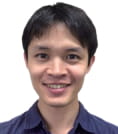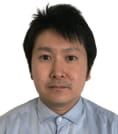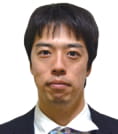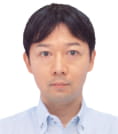- JST Home
- /
- Strategic Basic Research Programs
- /
 PRESTO
PRESTO- /
- project/
- Large-scale genome synthesis and cell programming/
- [Genome programming] Year Started : 2020
[Genome programming] Year Started : 2020
Toshiya Ando
Technical development of chromosome manipulation and organ reconstitution based on evolution of multicellular organisms
Grant No.:JPMJPR20K1
Researcher
Toshiya Ando

Project-specific Associate Proffessor
the Hakubi Center for Advanced Research
Kyoto University
Outline
In this project, I focus on the key genetic loci regulating characteristic functions of specific organs, which have been acquired during evolution of multicellular organisms. My goal is to artificially reconstitute characteristic characters of specific organs in other species by transplanting key genetic loci on the chromosomes of other organisms on a large scale. To achieve this goal, I will elucidate the molecular mechanisms of transcriptional regualtion of a key gene and develop chromosome manipulation techniques.
Masahito Ishikawa
Molecular basis of bacterial genomes protecting homologous recombination of repeat sequences
Grant No.:JPMJPR20K2
Researcher
Masahito Ishikawa

Associate Professor
Department of Bioscience
Nagahama Institute of Bio-Science and Technology
Outline
Tandem repeat sequences remain stable in the bacterial genome, despite the risk of loss of function due to the homologous recombination of them. This suggests the existence of a protective system for homologous recombination. In this study, I will identify the molecular basis for the protection of the ataA gene, which contains multiple tandem repeat sequences, from homologous recombination, leading to the development of new technology for manipulating the genome.
Akihisa Osakabe
Elucidation of operation and function of epigenome establishment by reconstitution
Grant No.:JPMJPR20K3
Researcher
Akihisa Osakabe

PRESTO Researcher, Japan Science and Technology Agency
Outline
In this project, I will elucidate the mechanism of gene expression regulated by crosstalk between histone variants and epigenetic modifications observed on repetitive sequences. Specifically, I will employ biochemical and molecular genetic approaches to reconstitute the epigenome in vitro and in plants, and analyze how epigenome establishes by introduction of specific histone variants and its regulatory system. In addition, I will verify the universality of epigenome establishment and its operating principles.
Hirohisa Kyogoku
Analysis of unstable chromosome segregation system in early embryonic development with micromanipulation approache
Grant No.:JPMJPR20K4
Researcher
Hirohisa Kyogoku

Assistant Professor
Graduate School of Agricultural Science
Kobe University
Outline
It is known that the frequency of chromosome segregation errors is extremely high during early embryonic development in mammals, however, the details of this remains poorly understood. In this project, I will establish a new analysis technology by artificially manipulating embryos to create embryos with different characteristics and perform special sampling using micromanipulation techniques, and elucidate the abnormal chromosome segregation of embryos. This project aims to understand a stable genome segregation system.
Atsuko Shirai
Establishment and its molecular basis of heterochromatin
Grant No.:JPMJPR20K5
Researcher
Atsuko Shirai

Research Scientist
Cluster for Pioneering Research
RIKEN
Outline
It is known that the heterochromatin structure, which spreads several Mbs around the centromere (pericentromere), plays an important role in the stable replication of chromosomes and normal division, whereas the precise functions of the sequence itself are unknown. In this study, I aim to construct an artificial chromosome that replicates and divides stably by elucidating (1) the role of strand-specific ncRNAs from repetitive sequences in heterochromatin formation and (2) the mechanism by which repetitive sequences are suppressed.
Takashi Sumikama
Elucidation of dynamics of chromosomes by simulation and comparison with experiments
Grant No.:JPMJPR20K6
Researcher
Takashi Sumikama

PRESTO Researcher, Japan Science and Technology Agency
Outline
Chromosomes are genetic materials that are essential for life. They form characteristic x-shape in the mitotic phase; however, the details of configuration of molecules and what kinds of molecules are included in the x-shaped chromosomes are still unclear. This project is aiming to clarify the structure and the dynamics of chromosomes by computer simulation. The model of simulation will be validated by comparison with various kinds of experiments, enabling us to perform more realistic simulation. A realistic model in return would give information that is helpful for designing new experiments.
Naomichi Takemata
Genome segregation in archaea and its application to chromosome engineering
Grant No.:JPMJPR20K7
Researcher
Naomichi Takemata

Assistant Professor
Graduate School of Engineering
Kyoto University
Outline
Archaea, the closest prokaryotic relatives of eukaryotes, are key to understanding eukaryogenesis. Archaea also have unique metabolic pathways and abilities to thrive under extreme environments, which opens up tremendous opportunities for potential industrial applications of the organisms. Massive engineering of archaeal genomes has long been hampered due to the absence of a tool to introduce long DNA molecules into archaeal cells. To address this problem, I will first identify a centromere for the first time in the archaeal domain. I will then develop an archaeal artificial chromosome vector that employs the identified centromere for accurate segregation. This study will not only reveal the fundamental function of archaeal chromosomes but also pave the way for their engineering.
Kazuhiro Maeda
Developing a bottom-up automatic DNA sequence design technology
Grant No.:JPMJPR20K8
Researcher
Kazuhiro Maeda

Associate Professor
Faculty of Computer Science and Systems Engineering
Kyushu Institute of Technology
Outline
Valuable chemical compounds, such as amino acids and drugs, are produced by recombinant cells. In the near future, the long-chain DNA synthesis technology will significantly increase the degree of freedom in DNA sequence design. However, it is difficult to design DNA sequences that realize desired biological functions by trial and error through biological experiments. We develop technology to automatically design gene circuits that realize the desired biological functions.
Mitsuhiro Matsuda
Understanding and manipulating of different time scales among species
Grant No.:JPMJPR20K9
Researcher
Mitsuhiro Matsuda

Research Scientist
Barcelona
EMBL (European Molecular Biology Laboratory)
Outline
Mice and humans develop on different time scales, as gestation periods differ between 20 days and 9 months. This is probably because the mouse and human genomes are different, but it is not known at all which part of the genome is responsible, and by what molecular mechanism differences in genome sequence determine species-specific developmental time scales. The purpose of this study is to clarify the principle of generating the difference in the developmental time scale between species by using the difference in the period of mouse and human segmentation clocks as a model, and finally to modify and manipulate the principle.
Hideaki Matsubayashi
Decoding Ancestral Cytoskeltal Function in the Genome of Latent Species
Grant No.:JPMJPR20KA
Researcher
Hideaki Matsubayashi

Assistant Professor
Frontier Research Institute for Interdisciplinary Sciences
Tohoku University
Outline
Advances in genome science have started to uncover primitive forms of actin cytoskeleton and their importance in eukaryote evolution. However, there are still challenges in elucidating the functions encoded in metagenomes and non-model organisms. In this study, I aim to reconstruct dynamic cytoskeletal function in artificial cells by establishing light inducible protein manipulation inside lipid vesicles. Based on this technique, I will seek to understand the development of eukaryotic membrane dynamics.
Ryosuke Yamada
Machine learning-assisted genome design for the production of useful chemicals
Grant No.:JPMJPR20KB
Researcher
Ryosuke Yamada

Associate Professor
Graduate school of engineering
Osaka Metropolitan University
Outline
It is expected to produce various useful chemicals from plant biomass, which is a renewable resource, against the background of environmental problems and depletion of petroleum resources. In this research, we will clarify the design of genome suitable for the production of useful chemicals using machine learning technology. Furthermore, we aim to reproduce the designed genome in yeast cells and realize efficient production of various useful chemicals.













